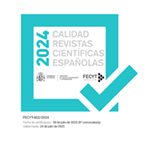Communication between minors and brands on social networks
Abstract
Social networks have allowed to establish a smooth, narrow between advertisers and users. On these platforms, consumers can declare followers and interact with brands, advertisers leverage the proactivity of users and thus increase the number of advertising impacts. Coca-Cola is one of the advertisers that have been known to establish in virtual communities, specifically the social network Tuenti. Combining the largest number of followers, Coca-Cola has a particularity: its communication is aimed at teenagers. Throughout this study we analyzed the relationship between the brand and the children through one to one communication, the characteristics of these messages, participatory gender differences and their possible contribution to the formation of a post-crisis consumer teenager.Downloads
Article download
License
In order to support the global exchange of knowledge, the journal Estudios sobre el Mensaje Periodístico is allowing unrestricted access to its content as from its publication in this electronic edition, and as such it is an open-access journal. The originals published in this journal are the property of the Complutense University of Madrid and any reproduction thereof in full or in part must cite the source. All content is distributed under a Creative Commons Attribution 4.0 use and distribution licence (CC BY 4.0). This circumstance must be expressly stated in these terms where necessary. You can view the summary and the complete legal text of the licence.










